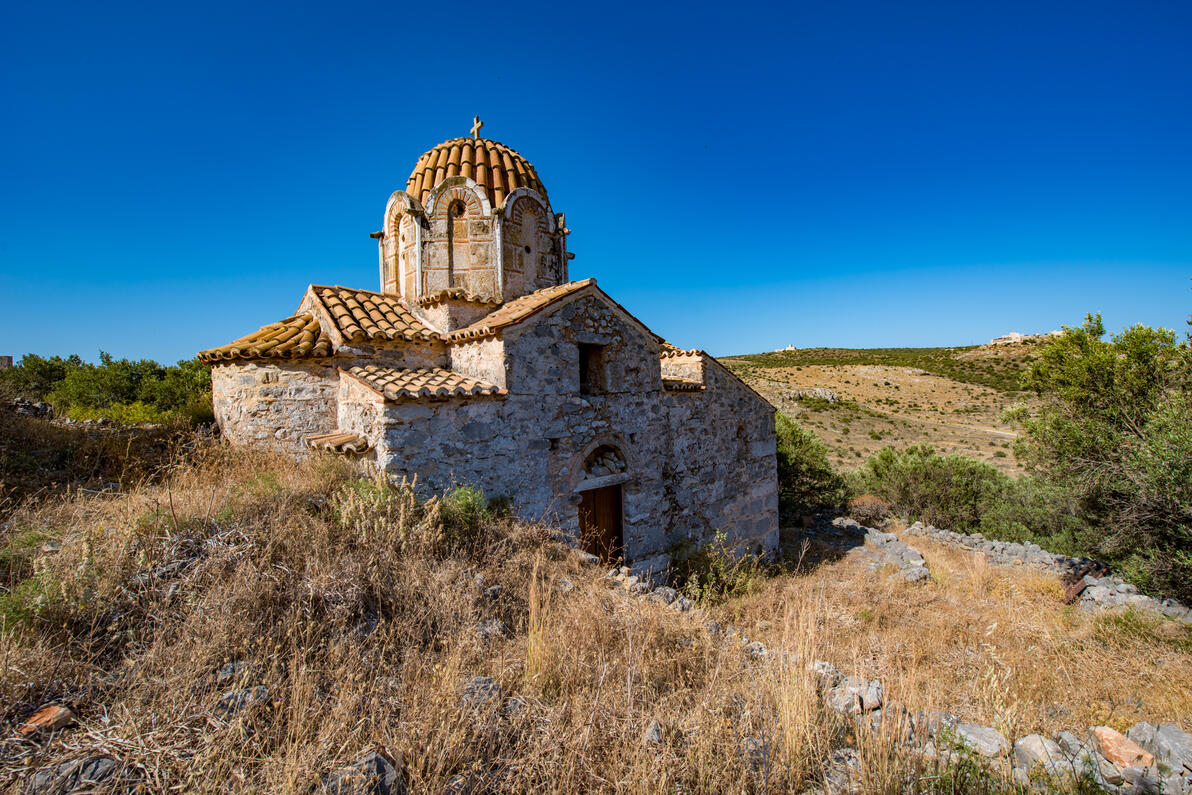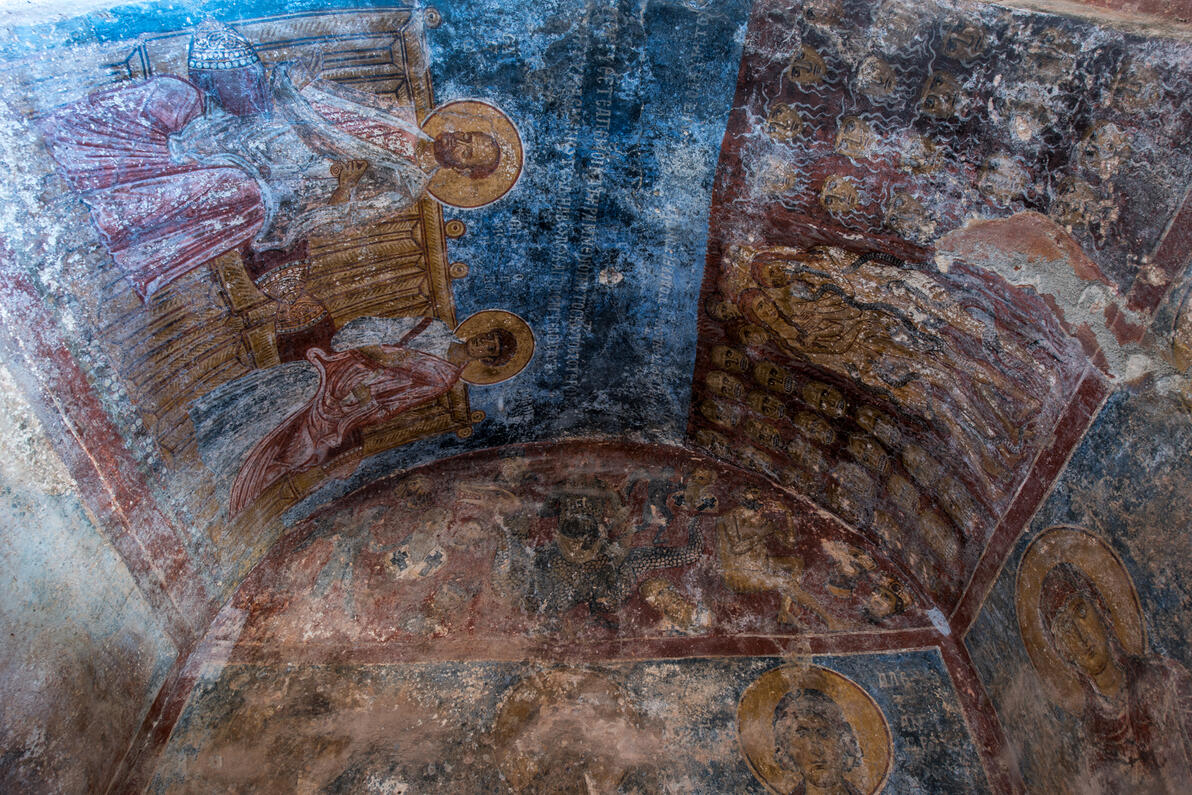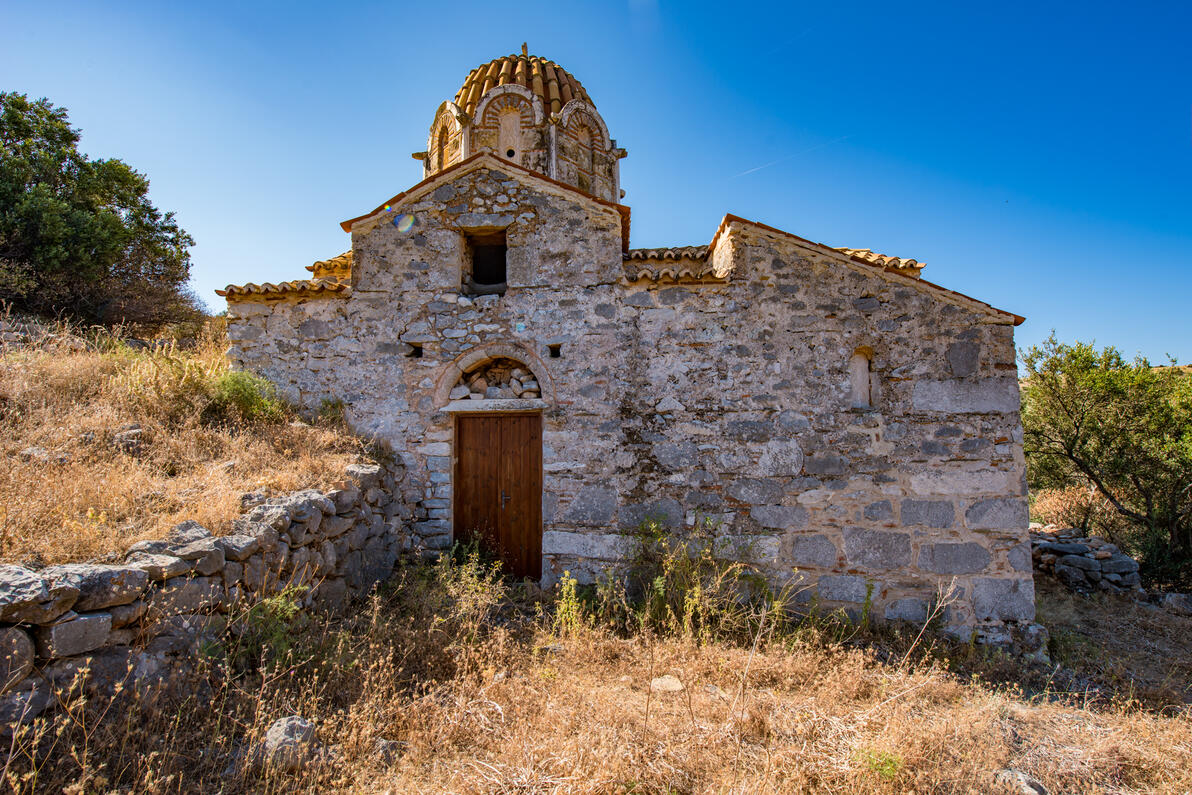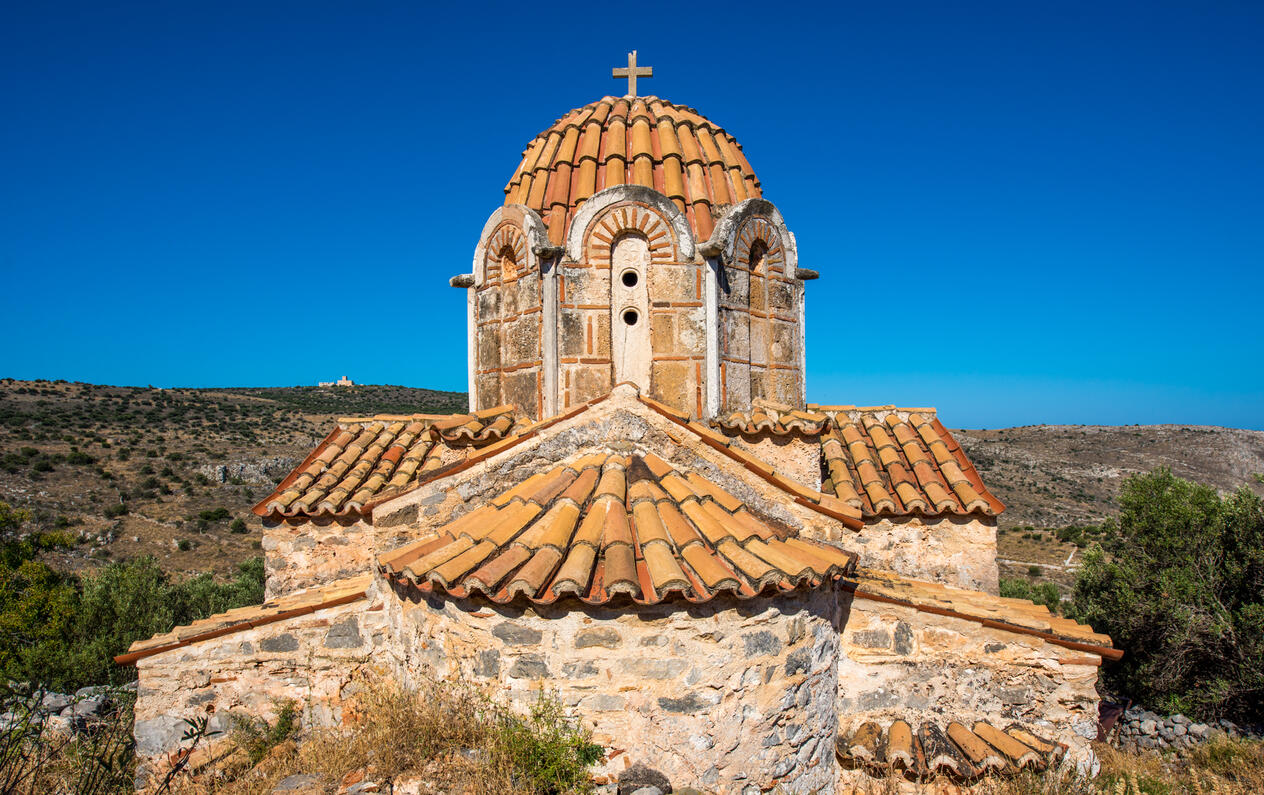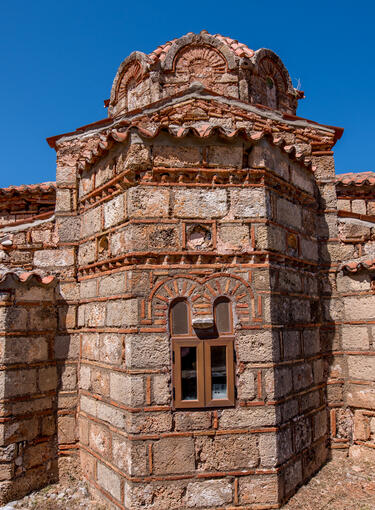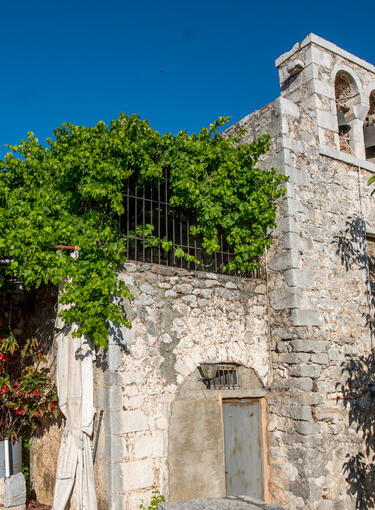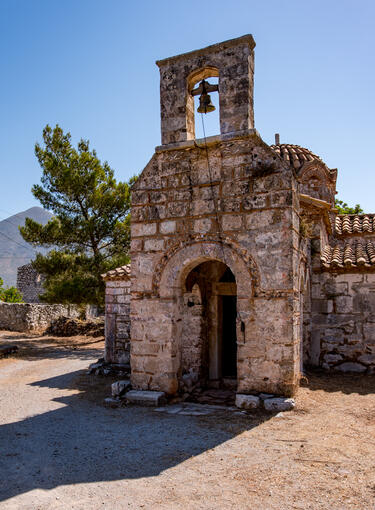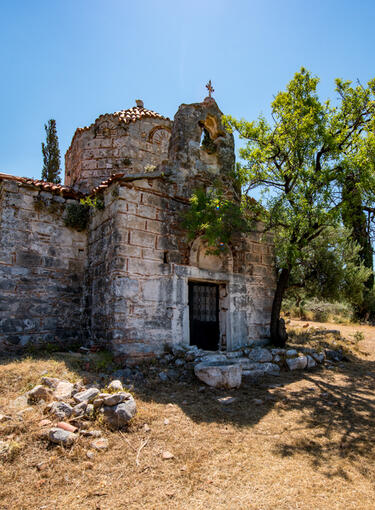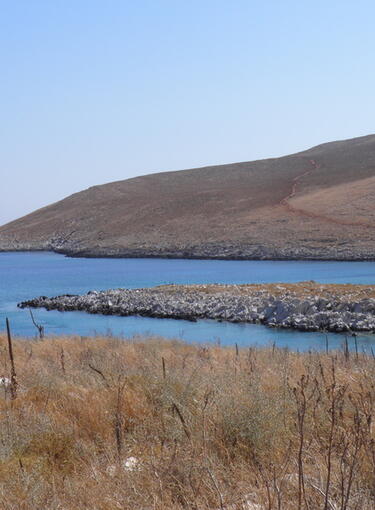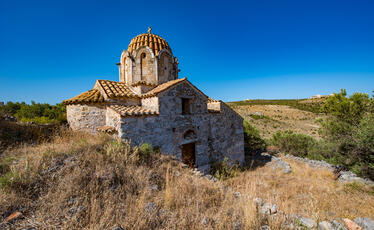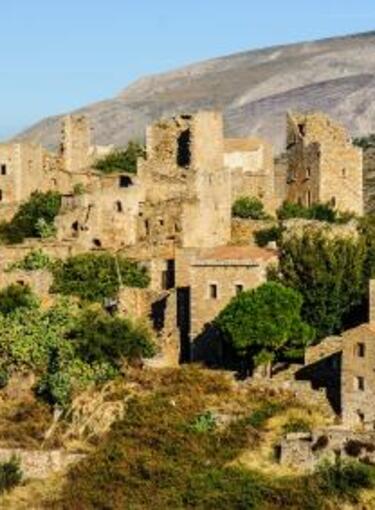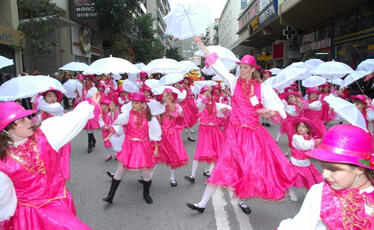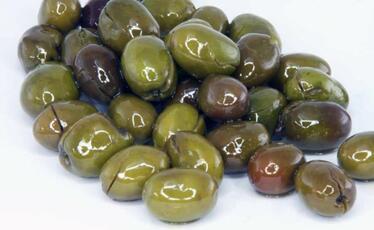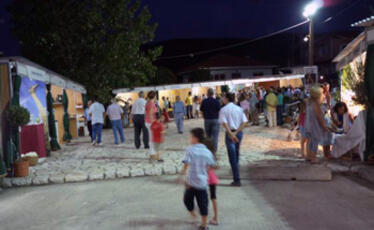At a rocky inclination, opposite the promontory Tigani and close to the village of Stavri, is one of the most important Byzantine monuments of Mani, the church of Episkopi, dedicated probably to Agios Georgios initially, and to Virgin Mary nowadays.
It dates from the end of the 12th century. Initially it was private and belonged to the ruler of the area, Georgios Daimonogiannis. He was related to the church that was mentioned in a letter if the archbishop of Ochrid Demetrios Chomatianos, in 1222, and is considered that probably for some time it was the cathedral church of the bishopric of Mani. It is a small cross-in-square church with a dome supported by two columns, and a narthex on the west. The care in their construction and the decoration of the external surfaces are impressive. For its construction ancient building material was used, carved members made of limestone and stone bricks made of crimson marble of Tainaro, while tiles decorate the dome and its arms, adding color and elegance to the monument. The octagonal dome is of the “Athenian type”, with marble columns on the corners and waterspouts.
At the interior of the church its sculpted decoration survives almost intact, which is of great importance because of the variety of its subject matters. The screen was initially made of marble and its architectural members have been incorporated in the present-day, built screen. The horseshow arch of the Holy Gate stands out, since it is unique in Greece. Important is the wall painting decoration of the church, which dates from around 1200. This is an exceptional example of this art, the most important in the area, because due to its style it is related to the art of Constantinople. At the conch of the apse and the built screen there are later wall paintings, which can be dated from the 18th century.
Informations
Additional
Date:
end of the 12th century
Season:
Byzantine
Holy Metropolis:
Mani
Address:
Stavri
Access:
Car
Parking:
Free


